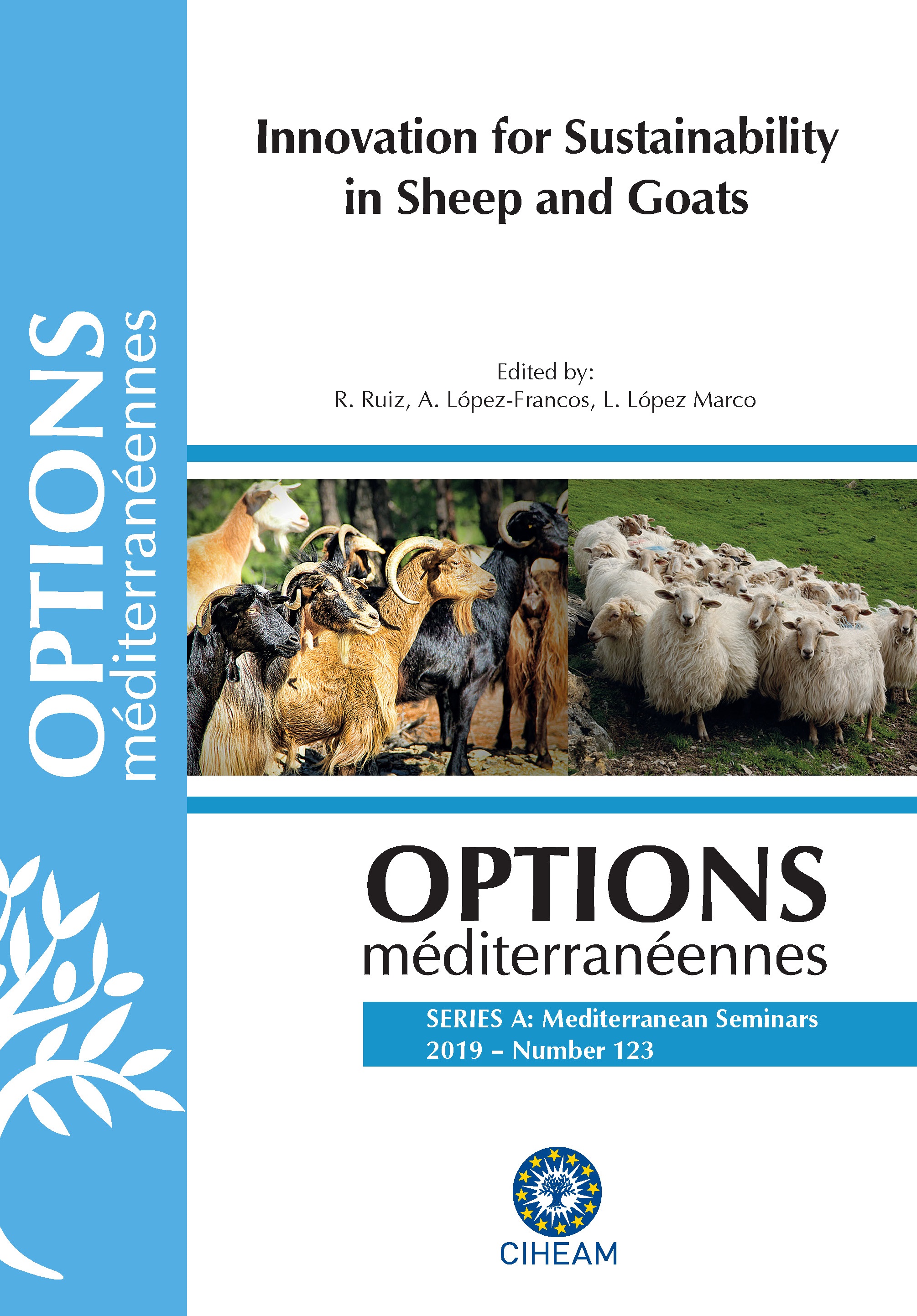| Article précédent | p. 31-35 | Article suivant |
Environmental implications of different production systems in a Sardinian dairy sheep farm
Sardinia (Italy) plays a relevant role on EU sheep milk production. As well as in others Mediterranean regions, contrasting dairy sheep farming systems coexist in Sardinia and an effective renovation process is needed in order to contrast the deep structural crisis. Eco-innovation of production processes and the valorisation of pasture-based livestock systems can be a key strategy to improve the farms competitiveness and to promote the typical Mediterranean dairy sheep products in a green way. For this purpose, research studies are needed in order to assess the environmental implications of Mediterranean sheep systems with a holistic and site-specific approach. The main objective of this study was to compare the environmental performances of two contrasting sheep milk production systems, by using a Life Cycle Assessment (LCA) approach. The LCA was carried out in a farm where, along ten years, a conversion from arable and irrigated crops to native and artificial pastures and a reduction of total mineral fertilizers supply occurred. The effects of the conversion on the environmental impacts were analyzed both using 1 kg of Fat and Protein Corrected Milk (FPCM) and 1 ha of surface as functional units. The LCA study highlighted that the change from a semi-intensive to a semi-extensive production system had a different effect on the environmental impacts depending on the utilized functional unit.
La Sardaigne (Italie) joue un rôle important dans la production de lait de brebis de l'UE. Ainsi que dans d'autres régions méditerranéennes, des systèmes agricoles contrastés de brebis laitières coexistent en Sardaigne et un processus de rénovation efficace est nécessaire pour contrecarrer la crise structurelle profonde. L'éco-innovation des processus de production et la valorisation des systèmes d'élevage à base de pâturage peut être une stratégie clé pour améliorer la compétitivité des exploitations agricoles et pour promouvoir les produits de brebis laitières typiques de la Méditerranée. A cet effet, des recherches sont nécessaires afin d'évaluer les conséquences environnementales des systèmes méditerranéens de brebis laitières avec une approche holistique et spécifique par site. L'objectif principal de cette étude était de comparer les performances environnementales de deux systèmes contrastés de production de lait de brebis, en utilisant une approche d'évaluation du cycle de vie (ACV). L'ACV a été réalisée dans une ferme où, au cours de dix années, ont eu lieu une conversion pour passer des cultures arables et irriguées aux pâturages naturels et artificiels et une réduction de l'apport total d'engrais minéraux. Les effets de la conversion sur les impacts environnementaux ont été analysés en utilisant 1 kg de lait corrigé pour la matière grasse et les protéines (FPCM) et 1 ha de surface en unités fonctionnelles. L'étude ACV a mis en évidence que le passage d'un système de production semi-intensif à un système semi-extensif a eu un effet différent sur les impacts environnementaux en fonction de l'unité fonctionnelle utilisée.
- [ Afficher ]
- [ Télécharger ]
- [ Exporter la citation ]
Vous pouvez télécharger la citation au format :
- [ Imprimer ]
-
Mots-clés
ANIMAL LAITIER, BREBIS, IMPACT SUR L'ENVIRONNEMENT, ANALYSE DU CYCLE DE VIECiter cet article
Franca A., Vagnoni E. Environmental implications of different production systems in a Sardinian dairy sheep farm. In : Ruiz R. (ed.), López-Francos A. (ed.), López Marco L. (ed.). Innovation for sustainability in sheep and goats. Zaragoza : CIHEAM, 2019. p. 31-35. (Options Méditerranéennes : Série A. Séminaires Méditerranéens; n. 123). 2. Joint Seminar of the Subnetworks on Nutrition and on Production Systems of the FAO-CIHEAM Network for Research and Development in Sheep and Goats, 2017/10/03-05, Vitoria-Gasteiz (Spain). http://om.ciheam.org/om/pdf/a123/00007855.pdf



